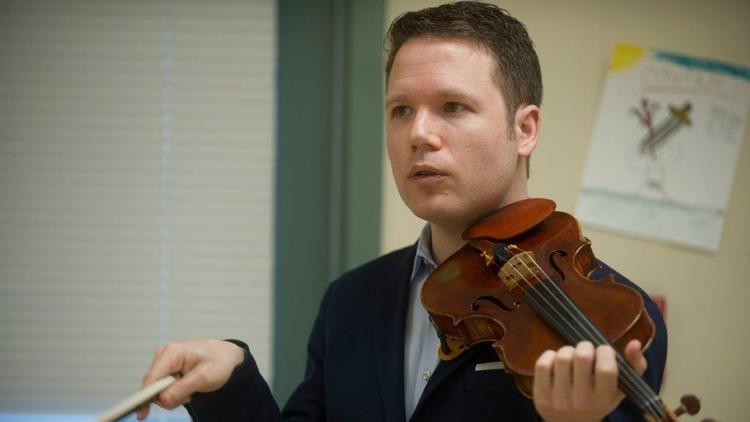
When the Annapolis Symphony Academy launches this fall, half the students in the program will be African-American or Hispanic-Latino.
That’s because when the Annapolis Symphony Orchestra decided to create its own academy program for young musicians, it saw a chance to not only promote diversity, but to build it into the program itself. The idea, Executive Director Patrick Nugent said, is to model the economic and cultural diversity today that the program’s organizers want to see in the orchestras of tomorrow.
“There is a crisis of diversity in our field,” Nugent said.

A report from the League of American Orchestras showed that in 2014 African-Americans comprised 1.8 percent of musicians in orchestras and Hispanic-Latino musicians comprised 2.5 percent. Nugent said that figure has remained about the same for decades.
The Annapolis Symphony Orchestra, with just one Latino musician, is no exception.
The overall goal of the program is to promote and train musicians to get them into undergraduate programs, and eventually to the stage as professional orchestra musicians. Right now, students are auditioning for the first two semesters of the program, which will begin in the fall, after school starts.
The program will include individual lessons, small ensemble coaching, guest workshops, chances to perform and music appreciation opportunities, such as tickets to watch Annapolis Symphony Orchestra performances. Right now, middle and high school students are eligible, and elementary ages will be added in subsequent semesters. Apprenticeship opportunities will also be available for high school students, Nugent said.
The program will meet twice a week — once for the individual lesson, and once for the ensemble practice.

The symphony orchestra’s concertmaster, Netanel Draiblate, will be program director.
The program was created to meet a need in Anne Arundel County for more individual instruction, Nugent said. But he said this also dovetailed perfectly with a national need — to address the lack of diversity in symphony orchestras.
The intention is to have half the students be African-American or Hispanic-Latino, Nugent said. They also intend to have half the students on full scholarship. Those groups will overlap but won’t be identical, Nugent said.
“The ability to play a classical instrument should not be restricted to kids whose families can afford it,” Nugent said.
The organizers also want to see more diverse audiences at the symphony.
“We will do a better job of attracting more diverse audiences if those audiences see themselves reflected on stage,” Nugent said.
The idea for the academy came as the orchestra’s Board of Trustees was putting together a multi-year vision, and asked itself what more it could do with education, Nugent said.
The future of music aside — learning a classical instrument can help students in many ways, Nugent said.
“The correlation between playing a musical instrument and high performance in STEM fields — science, technology, engineering and mathematics — is quite high,” he said.
Nugent said they heard from public schools that there is a need to keep musicians engaged throughout middle and high school. They heard from parents and instructors that there is a shortage of individual instruction all-around, but particularly for students who have trouble affording it. They hope to address both those issues.
The program will be largely taught by Annapolis Symphony musicians. That’s important, because it shows students the career opportunities available to them in the field.
“There’s so much room for expansion in that,” Draiblate said. “Part of it is trying to give them an option at a different kind of life.”
The symphony received a grant that will cover the majority of the program’s needs for the first six years. About $50,000 is still needed. The hope is that in its seventh year, the program will become self-sustaining, Nugent said. But that’s far from a certainty, he said.
About 20 students will be in the program when it first launches, and the academy will include only string instruments at first. The size of the program will grow each semester. The dream, Nugent said, is to bring the program to 200 students — half from the Annapolis area, and half from Anne Arundel County in general — by its seventh year.
Without a scholarship, a 16-week semester costs $1,700. The next round of auditions for the program will be held April 29 at Temple Beth Shalom in Arnold.
